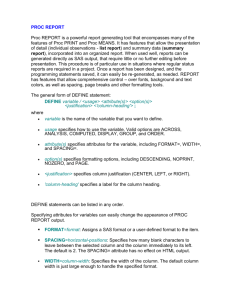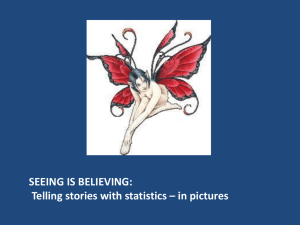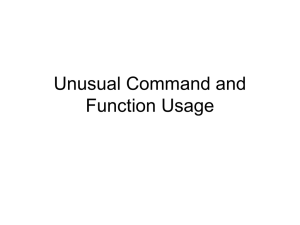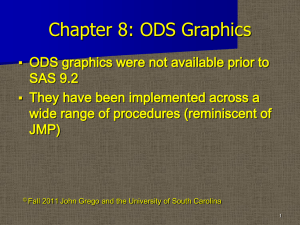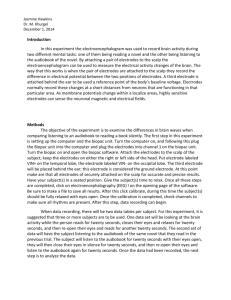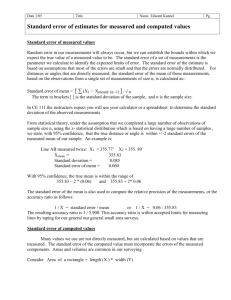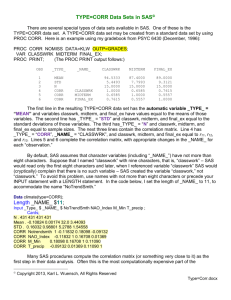Power Analysis With SAS: Independent Samples T Test
advertisement
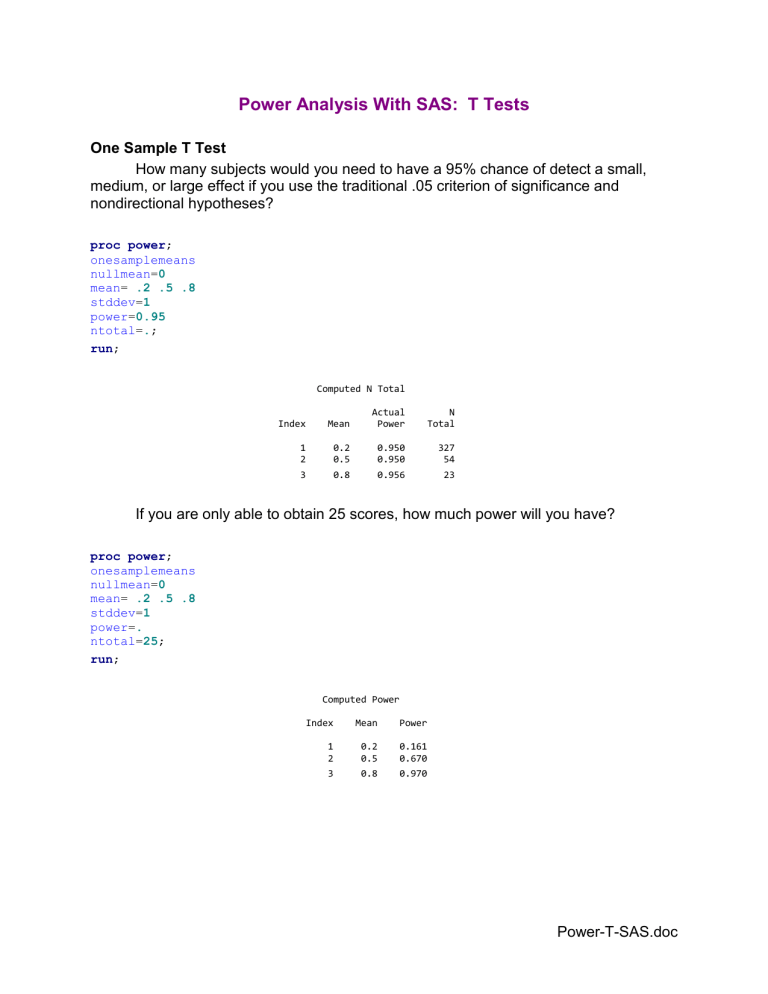
Power Analysis With SAS: T Tests One Sample T Test How many subjects would you need to have a 95% chance of detect a small, medium, or large effect if you use the traditional .05 criterion of significance and nondirectional hypotheses? proc power; onesamplemeans nullmean=0 mean= .2 .5 .8 stddev=1 power=0.95 ntotal=.; run; Computed N Total Index Mean Actual Power N Total 1 2 0.2 0.5 0.950 0.950 327 54 3 0.8 0.956 23 If you are only able to obtain 25 scores, how much power will you have? proc power; onesamplemeans nullmean=0 mean= .2 .5 .8 stddev=1 power=. ntotal=25; run; Computed Power Index Mean Power 1 2 0.2 0.5 0.161 0.670 3 0.8 0.970 Power-T-SAS.doc 2 Independent Samples T Tests I want to see how many subjects I need to obtain 95% power for a small effect, a medium effect, and a large effect. I shall employ the usual .05 criterion of statistical significance and nondirectional hypotheses. I intend to have equal sample sizes in the two groups. I also want a plot of power versus sample size for the three effect sizes. proc power; twosamplemeans meandiff= .2 .5 .8 stddev=1 groupweights=(1 1) power=0.95 ntotal=.; plot y=power min=0.5 max=0.99; run; Computed N Total Index Mean Diff Actual Power N Total 1 2 0.2 0.5 0.950 0.950 1302 210 3 0.8 0.952 84 1.0 Power 0.9 0.8 0.7 0.6 0.5 0 500 1000 Total Sample Size Mean Diff 0.2 0.5 0.8 1500 2000 3 Suppose I anticipate having twice as many scores in the one group as in the other. proc power; twosamplemeans meandiff= .2 .5 .8 stddev=1 groupweights=(2 1) power=0.95 ntotal=.; run; Computed N Total Index Mean Diff Actual Power N Total 1 2 0.2 0.5 0.950 0.951 1464 237 3 0.8 0.955 96 I set out to get 210 scores evenly split into two groups. I ended up with 98 in the one group and 74 in the other. How much power will I have? proc power; twosamplemeans meandiff= .2 .5 .8 stddev=1 groupns=(98 74) power=.; run; Computed Power Index Mean Diff Power 1 2 0.2 0.5 0.252 0.898 3 0.8 >.999 4 Correlated Samples T Test How many pairs of scores will I need to have 95% power if I use a .05 criterion of significance and nondirectional hypotheses? proc power; pairedmeans meandiff= .2 .5 .8 stddev=1 corr=.8 npairs=. power=.95; run; Computed N Pairs Index Mean Diff Actual Power N Pairs 1 2 0.2 0.5 0.950 0.952 132 23 3 0.8 0.965 11 Suppose that you will be able to obtain 132 pairs of scores, but expect the correlation to be only .6. What are your chances of obtaining a significant result? proc power; pairedmeans meandiff= .2 .5 .8 stddev=1 corr=.6 npairs=132 power=.; run; Computed Power Index Mean Diff Power 1 2 0.2 0.5 0.722 >.999 3 0.8 >.999 5 Pearson r How many subjects will you need to have a 95% chance of detecting a small, medium, or large correlation if you employ the traditional .05 level of significance and nondirectional hypotheses? Please note that it does matter (a little) whether you consider the X variable to be random (correlation model) or fixed (regression model). proc power; onecorr corr= .1 .3 .5 power=.95 ntotal=.; run; Computed N Total Index Corr Actual Alpha Actual Power N Total 1 2 0.1 0.3 0.05 0.05 0.950 0.950 1293 138 3 0.5 0.05 0.954 46 You were able to obtain 97 scores. How much power will you have? proc power; onecorr dist=t model=random fixed corr= .1 .3 .5 power=. ntotal=97; run; Computed Power Index 1 2 3 4 5 6 Model Corr Power Random X Random X Random X Fixed X Fixed X Fixed X 0.1 0.3 0.5 0.1 0.3 0.5 0.164 0.855 >.999 0.165 0.866 >.999 Return to Wuensch’s SAS Lessons Page Karl L. Wuensch, Dept. of Psychology, East Carolina University, Greenville, NC USA March, 2010
